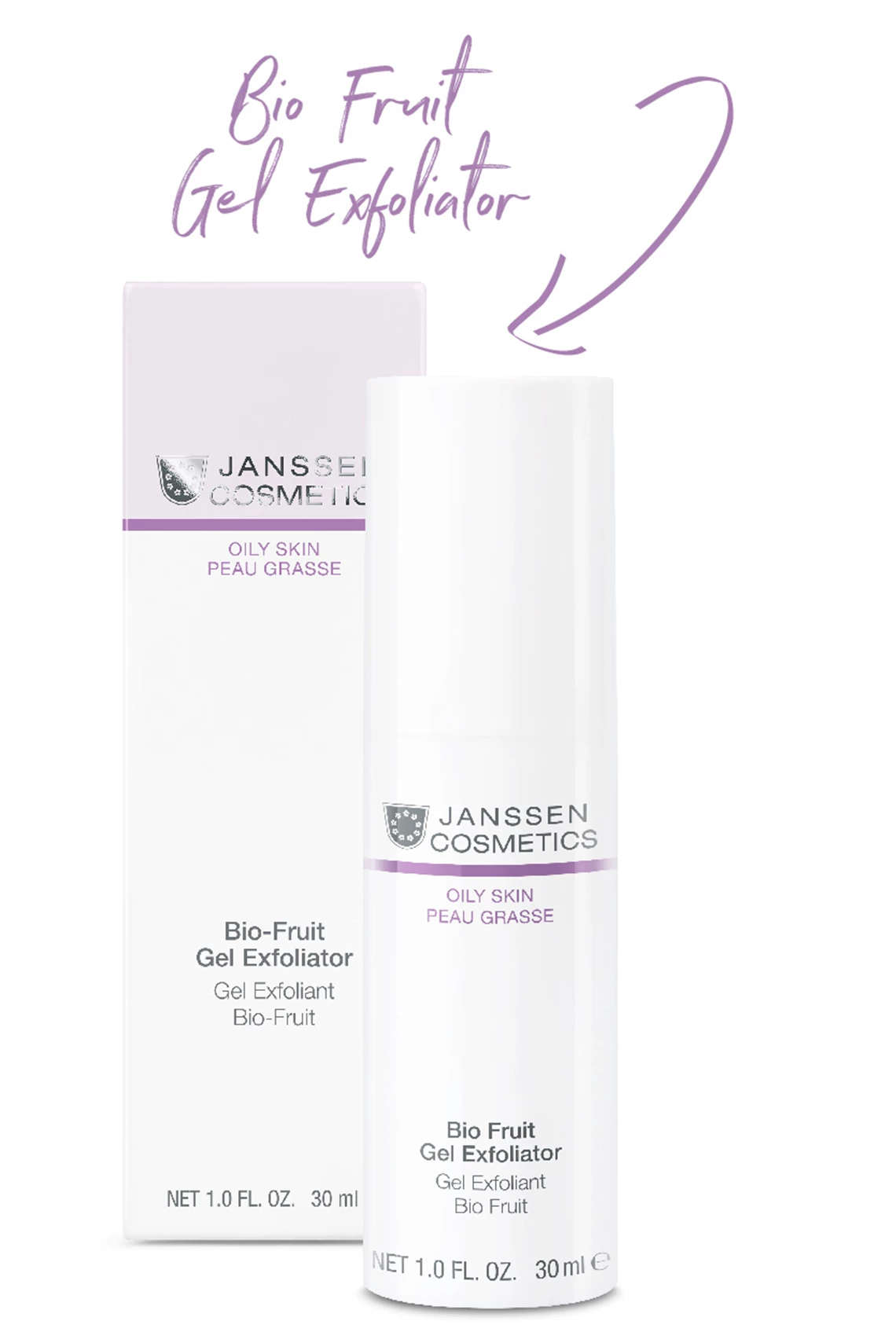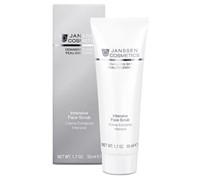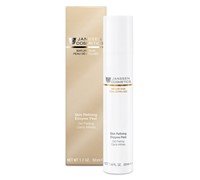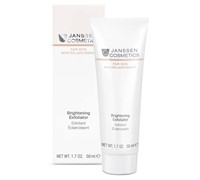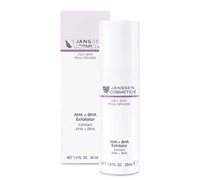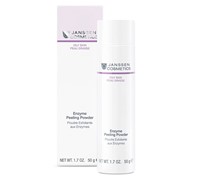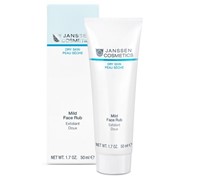What a Peeling! Bye summer, hello golden autumn!
What a Peeling! Bye summer, hello golden autumn! Say bye bye to rough skin, and make your skin shine. The summer is slowly coming to an end. Peelings are especially helpful to make your skin shine also after summer. Our experts will explain everything about peelings and how they contribute to radiant and smoother skin today.
Peelings - real all-rounders? Peelings breathe new life into tired skin. And right on time for the new season. Although our skin renews itself about once a month, we can support it by applying peelings regularly. This allows the skin to breathe more easily, makes it look fresher and, when used regularly, becomes softer and purer. But beware: there are a few things to be aware of when using exfoliants. After all, facial skin is particularly sensitive. Our application technician Hannelore Thoma, as an experienced beautician, knows all about peelings. She will be happy to answer your questions about peelings and their effects.
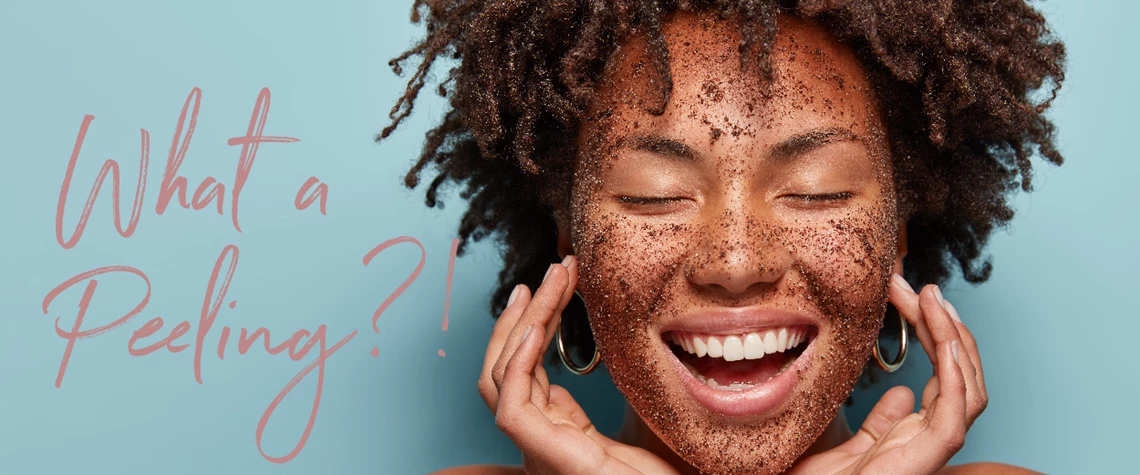
How often does our skin renew itself?
In principle, our (facial) skin renews itself naturally every 28 days. Old dead cell material is rejected and replaced by new cells. However, the body's own regeneration decreases with increasing age and the period of regeneration is extended to up to 50 days. Incorrect facial care and stress can also slow down the natural mechanism at a younger age. Ideally, therefore, a gentle cell renewal in the form of a gentle peeling should be carried out at regular intervals.
How does a peeling work?
A facial peeling gently removes excess skin scales, cleanses the pores and stimulates the blood circulation. A peeling therefore removes excess horny cells and the skin surface appears visibly fresher. Dry, rough skin areas are smoothed and made to shine. In principle, the exfoliating grains contained in the exfoliator gently "sand" the skin surface. Thus, the regeneration mode is activated and an impulse is set in the depth of the skin to produce new cells. The rate of division is thus increased.
Why peel now? When is the perfect time for peelings?
Changes in temperature, stress, etc. alter the skin texture and with age the cell metabolism slows down. The consequences: The skin is dehydrated, it usually begins to tighten and the complexion becomes grey and pale. Especially at the turn of the year, peelings are a good way to support the skin. However, you should pay particular attention to your skin type and skin texture. After all, the frequency of application depends greatly on your skin type.
System.ArgumentException: String cannot be of zero length. Parameter name: oldValue at System.String.ReplaceInternal(String oldValue, String newValue) at System.String.Replace(String oldValue, String newValue) at ASP._Page_Views_Partials_grid_editors_media_cshtml.Execute() in c:\inetpub\wwwroot\UMB_JanssenCosmetics_WebSH3\Views\Partials\Grid\Editors\Media.cshtml:line 11 at System.Web.WebPages.WebPageBase.ExecutePageHierarchy() at System.Web.Mvc.WebViewPage.ExecutePageHierarchy() at System.Web.WebPages.WebPageBase.ExecutePageHierarchy(WebPageContext pageContext, TextWriter writer, WebPageRenderingBase startPage) at System.Web.Mvc.RazorView.RenderView(ViewContext viewContext, TextWriter writer, Object instance) at System.Web.Mvc.BuildManagerCompiledView.Render(ViewContext viewContext, TextWriter writer) at Umbraco.Core.Profiling.ProfilingView.Render(ViewContext viewContext, TextWriter writer) at System.Web.Mvc.HtmlHelper.RenderPartialInternal(String partialViewName, ViewDataDictionary viewData, Object model, TextWriter writer, ViewEngineCollection viewEngineCollection) at System.Web.Mvc.Html.PartialExtensions.Partial(HtmlHelper htmlHelper, String partialViewName, Object model, ViewDataDictionary viewData) at System.Web.Mvc.Html.PartialExtensions.Partial(HtmlHelper htmlHelper, String partialViewName, Object model) at ASP._Page_Views_Partials_grid_editors_base_cshtml.Execute() in c:\inetpub\wwwroot\UMB_JanssenCosmetics_WebSH3\Views\Partials\Grid\Editors\Base.cshtml:line 20
#1 Do not peel directly before the holiday!
The removal of the outer layers of horny skin as part of every peeling reduces the skin's natural sensitivity to light. The light callosity is lowered and the skin's own protection is thus reduced. Sunburn can therefore occur more easily.
#2 Better peel in the evening than in the morning!
Possible redness caused by the peeling can be reduced overnight. The skin can be soothed overnight and can radiate a great deal in the morning.
How do I carry out a peeling gently?
Before applying a peeling, the skin should be cleansed and ideally moistened afterwards. Massage the exfoliator in with circular movements from bottom to top. Then wash off the peeling residue with plenty of lukewarm water. No additional soap should be used for this. The effect of the peeling is intensified with a special peeling glove.
How do I care for my skin after peeling?
Just as important as the cleaning before the peeling, is the care after the peeling. Because the skin is "in need" after a peeling application. An active substance-rich cream or a moisturising serum as well as an ampoule are perfectly suited for after-peeling care. A face mask is also suitable. Incidentally, the skin is very receptive to this type of active care ingredients after a peeling.
Body-Scrub equals face peeling?
Although the application of face and body scrubs is similar, the skin on the face is naturally more sensitive than on the rest of the body. This is exactly why the peelings differ mainly in the structure of the peeling particles. The particles are coarser for body scrubs than for facial scrubs. For facial skin, therefore, only products specifically designed for facial skin should be used. Skin irritations, irritations or even injuries can thus be avoided. The coarse grains would irritate the thin and sensitive facial skin too much.
Which peeling methods are available? And for which skin types are the respective peeling variants suitable?
First of all I would like to point out that a peeling should always be adapted to the current condition of the skin. It is best to consult your trusted beautician to find out which peeling method is suitable for your skin type. After all, an exfoliation should be as gentle but also as efficient as possible so that your skin shines again.
Mechanical peelings
Dead skin cells are removed with microfine, rounded particles (of natural origin).
Skin type info: This is a gentle and weak peeling variant that is suitable for almost every skin type.
Enzymatic peelings
Enzymes are partly obtained from natural plant extracts and biotechnologically. These enzymes act on the surface of the skin and promote the desquamation process of the skin. They remove the protein compounds that hold the dead horny cells together and remove them intensively - up to 5 layers.
Skin type info: Enzyme peelings are therefore particularly suitable for sensitive skin types and can also be used by customers suffering from rosacea.
Translated with www.DeepL.com/Translator (free version)
Chemical peelings
Chemical peelings are so-called fruit acid peelings. These consist of acids of natural origin and can cause different effects due to the individual concentration and pH-values. Depending on the pH value reached, chemical peelings have a superficial, medium-deep or deep effect. Higher concentrations (from 20%) and lower pH values should therefore only be performed by dermatologists or specially trained cosmeticians. Specially trained cosmeticians may offer the JANSSEN COSMETICS Exfoliation System (fruit acid peeling) in the cabin. Our fruit acid peelings are therefore only available from our partner cosmetic institutes or can be booked as part of a treatment.
Skin type info: Chemical peelings with fruit acid are only conditionally suitable for sensitive skin. Ideally, a low concentration should be started and left on the skin for only a short time.
Fruit acid peeling for home treatment?
As the skin can be irritated by the acid, it is recommended to have the treatment done by a skin expert. You are welcome to try a fruit acid peeling at home. Our mild fruit acid peeling Bio Fruit Gel Exfoliator of the OILY SKIN series is perfect for home treatment.
In order to achieve better effects, we recommend an accompanying professional fruit acid peeling treatment (with a restorative 20-30-40-60 % concentration) at our certified cosmetic institutes.
When is the best time for a fruit acid peeling?
In principle, the colder seasons are considered the ideal time for a fruit acid peeling, as direct sunlight should be avoided after the application. Since the treatment takes several sessions to build up concentration, the skin should be protected against UV light for a long time.
Competent advice: Our cosmetic institutes are there for you
Important: Competent advice from experts is very important for fruit acid peelings. It can provide information about frequency and the following care products and the necessary light protection.
